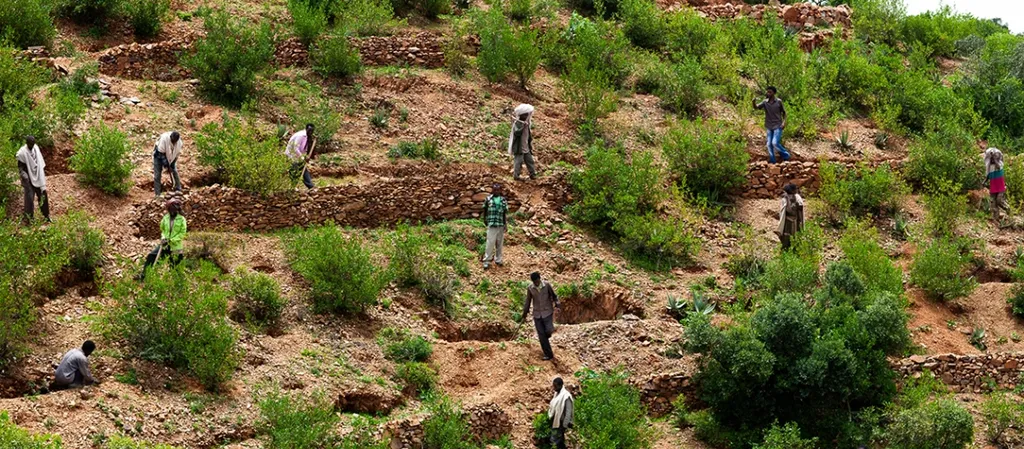In the heart of Ethiopia, a critical battle is being waged against land degradation, one that could hold valuable lessons for sustainable agriculture and land management worldwide. A recent study published in the journal *Discover Agriculture* (which translates to *Agriculture Discovery*), led by Alemayehu Temesgen Gebremikael of the Department of Rural Development and Agricultural Innovation at Haramaya University, sheds light on the intricate web of factors influencing smallholder farmers’ investments in sustainable land management innovations (SLMIs).
The study, conducted in central Ethiopia, reveals that farmers are most heavily investing in inorganic fertilizers (78%), improved soil/stone bunds (57%), bench terraces (53%), and improved crop varieties (39%). These findings are not just numbers; they represent a lifeline for farmers struggling to maintain productivity in degraded lands. “Understanding these investment patterns is crucial for designing targeted interventions that can boost agricultural productivity and combat land degradation,” Gebremikael explains.
The research employed a Multivariate Probit (MVP) model to analyze the data collected from 190 randomly selected household heads. The model’s pairwise correlation matrix unveiled a significant finding: complementarities among all SLMIs invested in by the farmers. This means that the adoption of one innovation often goes hand in hand with the adoption of others, a finding that could reshape how agricultural extension services and policymakers approach farmer support.
The study also identified key determinants that influence farmers’ investment decisions. Farmers with higher education levels, male-headed households, those participating in innovation platforms, and those with access to credit and incentives are more likely to invest in SLMIs. Additionally, factors such as plot slope, livestock size, off-farm activities, proximity of farm fields to homes, and the farmer’s age also play significant roles.
So, what does this mean for the future of sustainable agriculture? The findings suggest that a bundled approach, combining agronomic, vegetative, and physical SLMIs, could be more effective than isolated interventions. Policymakers, project planners, and development practitioners are advised to consider these statistically significant factors when designing and communicating SLMIs to smallholder farmers.
This research not only provides a roadmap for enhancing investment in SLMIs but also underscores the importance of understanding the complex interplay of factors that influence farmers’ decisions. As Gebremikael notes, “By addressing these determinants, we can empower farmers to make informed choices that benefit both their livelihoods and the environment.”
The implications of this study extend beyond Ethiopia, offering valuable insights for sustainable land management practices globally. As the world grapples with the challenges of climate change and food security, understanding and promoting effective SLMIs could be a game-changer. The journey towards sustainable agriculture is complex, but with research like this, we are better equipped to navigate the path forward.

